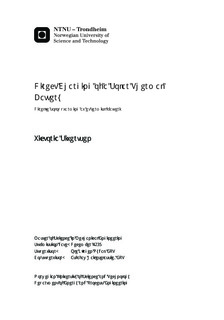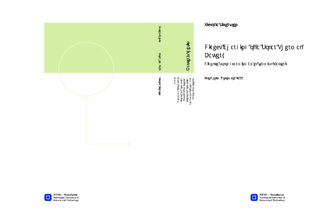| dc.contributor.advisor | Nydal, Ole Jørgen | nb_NO |
| dc.contributor.advisor | Haileselassie, Asfafaw | nb_NO |
| dc.contributor.author | Sivertsen, Victoria | nb_NO |
| dc.date.accessioned | 2014-12-19T11:51:44Z | |
| dc.date.available | 2014-12-19T11:51:44Z | |
| dc.date.created | 2014-03-12 | nb_NO |
| dc.date.issued | 2013 | nb_NO |
| dc.identifier | 704646 | nb_NO |
| dc.identifier | ntnudaim:9958 | nb_NO |
| dc.identifier.uri | http://hdl.handle.net/11250/235433 | |
| dc.description.abstract | Direct illumination of a thermal storage from a concentrating solar collector can be used to charge a phase change material (PCM) for the purpose of storing heat for cooking. Top illumination can be achieved by a double reflecting system to avoid any dangers of expansion from heating the storage from the bottom.An experimental investigation of the double reflecting system has been conducted at the lab of the Department of Energy and Process. The main purpose of the experiments was to be able to conduct an efficiency measurement of the system s ability to charge the heat storage. A double reflective solar concentrator with a heat storage has been instrumented and made ready for testing. Two tests of the full system with direct illumination of the heat storage by the sun have been conducted. Temperature measurements were done by thermocouples in the heat storage and on the secondary reflector, and a thermal camera was used to monitor the temperature of the top plate of the heat storage. The tests were not satisfactory in that they did not succeed to melt the phase change material (PCM) in the storage, and an efficiency measurement could not be concluded. The reflective film was as a result of these tests changed to reflective aluminium tiles for a better performance. Additional tests with a thin absorber plate of carbon steel were then conducted, since the sun was now too low on the sky to allow a complete test. The focal point on the thin absorber plate reached temperatures above 300°C, and the focusing power of the system was promising. A test procedure for tracing a laser ray from a self-adjusting laser diode to the absorber by utilizing a Computer Numerical Control machine (CNC-machine) and a digital camera for automation has been developed and tested. Post processing of images acquired has been programmed in the Matlab programming software to crate intensity plots of the focal point of the double reflector. By means of a grid paper on the absorber plate, the focal point of the primary reflector was found for the reflective film and for the reflective aluminium tiles to be 665 mm and 662 mm respectively. The secondary reflectors optimal position to be able to focus the rays on to an absorber plate placed at the base of the primary reflector has been investigated by the new test procedure, and found to be 683 mm, with a separation distance between the two foci of 21 mm. A simple analysis of the double reflector in a Ray Tracing program gave a separation distance of around 20 mm. | nb_NO |
| dc.language | eng | nb_NO |
| dc.publisher | Institutt for energi- og prosessteknikk | nb_NO |
| dc.title | Direct Charging of a Solar Thermal Battery: Direkte soloppvarming av et termisk batteri | nb_NO |
| dc.type | Master thesis | nb_NO |
| dc.source.pagenumber | 123 | nb_NO |
| dc.contributor.department | Norges teknisk-naturvitenskapelige universitet, Fakultet for ingeniørvitenskap og teknologi, Institutt for energi- og prosessteknikk | nb_NO |

